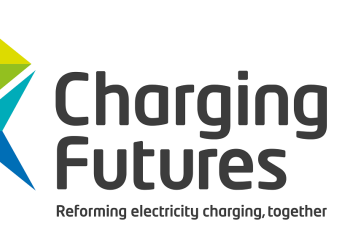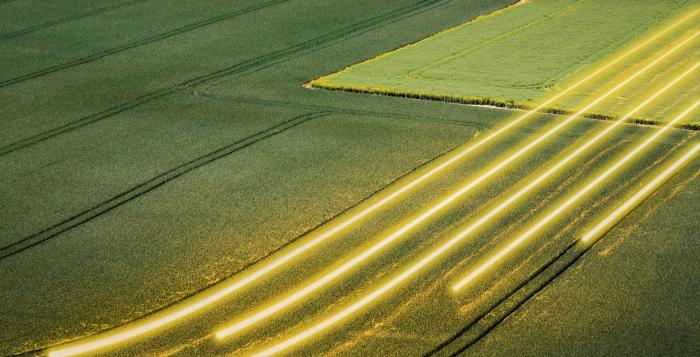All users of the electricity transmission system pay to use it. This brief overview looks at who pays, for what, and how the charges are calculated.
All users of Great Britain’s electricity network pay to use it. Users include generators, who use the network to transport the electricity they generate to where it is needed, and demand users who use it to obtain electricity when they need to use it.
Download the Charging Futures network charges explainer
How users are charged, and the type of charge they receive, depends on how they use the system. There are four main types of charges:
TNUoS charges recover the costs of installing and maintaining the transmission system and are charged to all suppliers and generators.
BSUoS charges recover the costs of the day-to-day operation of the transmission system.
Connection charges recover the cost of installing and maintaining connection assets which connect individual users to the GB transmission network.
AAHEDC recovers costs for the north of Scotland which is currently the only area specified to receive assistance.
How are the charges calculated?
TNUoS tariffs aim to reflect the cost of using the network, to help network users make efficient decisions about where and when to use it. Charges vary by location, reflecting the costs that users impose on the transmission network to transport their electricity.
Demand users who pay half-hourly tariffs are charged according to what they used at the three highest peaks of system demand (known as triad periods – which cover the highest demand period between November and February each year). These tend to be large businesses.
Generator users also pay based on a capacity value agreed between them and the ESO – this is known as Transmission Entry Capacity or TEC.
There is also an embedded export tariff for those generators who are connected to the distribution network with TEC<100MWs. This is based on the generators export over the triad periods.
How do we know charging is fair, and gives value?
The charging methodology we use produces tariffs that vary by location based on how close a generator is to demand or how close the demand is to generation.
This incentivises generators and demand to be close to each other reducing the need for investment in the transmission system.
The methodology is defined in the Connection and Use of System Code (CUSC) and subject to industry open governance. The ESO keeps the methodology under review and proposes changes where necessary as well as working with Ofgem and other stakeholders to identify areas for improvement.
What's the process for changing the charging methodologies?
Incremental changes
Incremental changes to charging methodologies happens through changing the industry codes (CUSC, DCUSA and BSC). Industry codes are 'live' documents, meaning they can be changed by parties raising code modifications.
This process of modifying codes is the open code governance process. Modifications can be proposed by code parties and, in some cases, other interested parties including Citizens Advice and Citizens Advice Scotland.
Each code has a panel or committee that oversees the assessment of proposed changes to that code. A general rule is that changes should only be made if they better facilitate that code’s ability to meet its objectives.
For some proposed changes, the code’s panel will also make the final decision on whether implementation is appropriate, but this is not always the case. Certain modifications require consent from Ofgem's governing body, the Authority.
You can find out more information on:
- industry code governance on Ofgem's website
- the CUSC, including active code modifications, on the ESO website
- the BSC, including active code modifications, on the Elexon website
- the DCUSA, including active code modifications, on the DCUSA website
Guidance for raising a potential change
If you are considering a potential change to access and network charging arrangements, you are encouraged to follow Ofgem's Charging coordination guidance. This will outline how to coordinate your issue through the Charging Futures forum, task forces, and the open governance process.
The Charging coordination guidance outlines:
- the recommended routes to raise your issue
- the criteria to help understand which route you should take
- who to speak to if you want to proceed with one of the routes, or are still unsure
If you are still unsure, please get in touch with Ofgem at [email protected] or with the lead secretariat at [email protected] who will help guide you through the coordination steps.
Significant changes
Significant changes to charging methodologies can happen through a significant code review (SCR). Ofgem will undertake SCRs from time to time. An SCR provides a role for Ofgem to holistically review a code-based issue (for the main commercial industry codes) and speed up industry reform.
More information on the SCR process can be found on Ofgem's website.
Coordinating multiple significant changes
Charging Futures is a coordinated approach to considering significant code reform related to access and charging arrangements. It takes a more strategic view of access and charging change by:
- making recommendations for significant change
- recommending how these should be taken through the open code governance process as individual modifications, or as an SCR

The future of charging
Charging arrangements are fundamental to how the electricity market works to meet our energy needs. As we transition to a more decarbonised, decentralised, and digitised energy system, network charging arrangements need to evolve with it.
We are supporting industry with this change through the Charging Futures forum - a place for industry to understand, collaborate, and shape the implementation of significant electricity network charging reform across the whole system.

Get in touch
If you have any questions about any of the Charging Futures, please don't hesitate to ask us at [email protected].
You can also join our mailing list to stay informed about Charging Futures.





